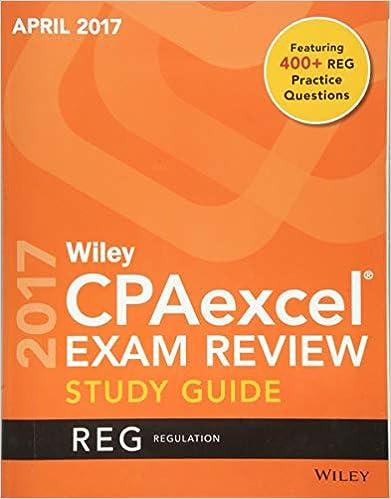Question
17. Listed below are ten terms followed by a list of phrases that describe or characterize five of the terms. Match each phrase with the
17. Listed below are ten terms followed by a list of phrases that describe or characterize five of the terms. Match each phrase with the correct term by placing the letter designating the best term in the space provided by the phrase.
| 1. Predictive value | Information is useful in projecting cash flows. | ____ |
| 2. Relevance | Pertinent to the decision at hand. | ____ |
| 3. Distribution to owners | Information is available prior to the decision. | ____ |
| 4. Confirmatory value | Decrease in equity due to transfers to owners. | ____ |
| 5. Timeliness | Information confirms expectations. | ____ |
18. Listed below are ten terms followed by a list of phrases that describe or characterize five of the terms. Match each phrase with the correct term by placing the letter designating the best term in the space provided by the phrase.
| 1. Gain | Along with relevance, a fundamental decision-specific quality. | ____ |
| 2. Materiality | Results if an asset is sold for more than book value. | ____ |
| 3. Completeness | Information contains all information necessary for faithful representation. | ____ |
| 4. Comprehensive income | The change in equity from nonowner transactions. | ____ |
| 5. Faithful representation | Concerns the decision-making impact of both the amount and nature of an item. | ____ |
19. Listed below are ten terms followed by a list of phrases that describe or characterize five of the terms. Match each phrase with the correct term with their phrases by placing the letter designating the best term in the space provided by the phrase.
| 1. Neutrality | Important in analysis between firms. | ____ |
| 2. Comparability | Accounting information should be unbiased. | ____ |
| 3. Consistency | The process of including data in financial statements. | ____ |
| 4. Cost effectiveness | Applying the same accounting practices over time. | ____ |
| 5. Recognition | Considers the value of using information relative to cost of providing it. | ____ |
20. Listed below are ten terms are followed by a list of phrases that describe or characterize five of the terms. Match each phrase with the correct term by placing the letter designating the best term in the space provided by the phrase.
| 1. Monetary unit assumption | Implies consensus among different observers. | ____ |
| 2. Verifiability | Assumes all transactions can be identified with a particular entity. | ____ |
| 3. Economic entity assumption | Assumes an entity will continue to operate indefinitely. | ____ |
| 4. Going concern assumption | Requires reporting the financial life of an entity in discrete time frames. | ____ |
| 5. Periodicity assumption | Ignores the possibility of inflation. | ____ |
21. Listed below are ten terms followed by a list of phrases that describe or characterize five of the terms. Match each phrase with the correct term by placing the letter designating the best term in the space provided by the phrase.
| 1. Historical cost principle | Basis of measurement for fixed assets. | ____ |
| 2. Materiality | Recognition of revenue only after certain criteria are satisfied. | ____ |
| 3. Matching principle | Guide to expense recognition. | ____ |
| 4. Full-disclosure principle | Reporting of all information that could affect decisions. | ____ |
| 5. Realization principle | Application of GAAP sometimes avoided under this constraint. | ____ |
23. Listed below are ten terms followed by a list of phrases that describe or characterize five of the terms. Match each phrase with the correct term by placing the letter designating the best term in the space provided by the phrase.
| 1. Expenses | Net assets. | ____ |
| 2. Equity | Outflows of resources to generate revenues. | ____ |
| 3. Distributions to owners | Cash dividends. | ____ |
| 4. Investments by owners | Claims of creditors against the assets of a business. | ____ |
| 5. Liabilities | Transfers of resources in exchange for common and preferred stock. | ____ |
24. Listed below are ten terms followed by a list of phrases that describe or characterize five of the terms. Match each phrase with the correct term by placing the letter designating the best term in the space provided by the phrase.
| 1. Losses | Net outflows from peripheral transactions. | ____ |
| 2. Assets | Increases in equity from the sale of goods and/or services. | ____ |
| 3. Revenues | Results if an asset is sold for more than book value. | ____ |
| 4. Comprehensive income | All changes in equity except owner transactions. | ____ |
| 5. Gains | Probable future economic benefits controlled by an entity. | ____ |
Step by Step Solution
There are 3 Steps involved in it
Step: 1

Get Instant Access to Expert-Tailored Solutions
See step-by-step solutions with expert insights and AI powered tools for academic success
Step: 2

Step: 3

Ace Your Homework with AI
Get the answers you need in no time with our AI-driven, step-by-step assistance
Get Started


